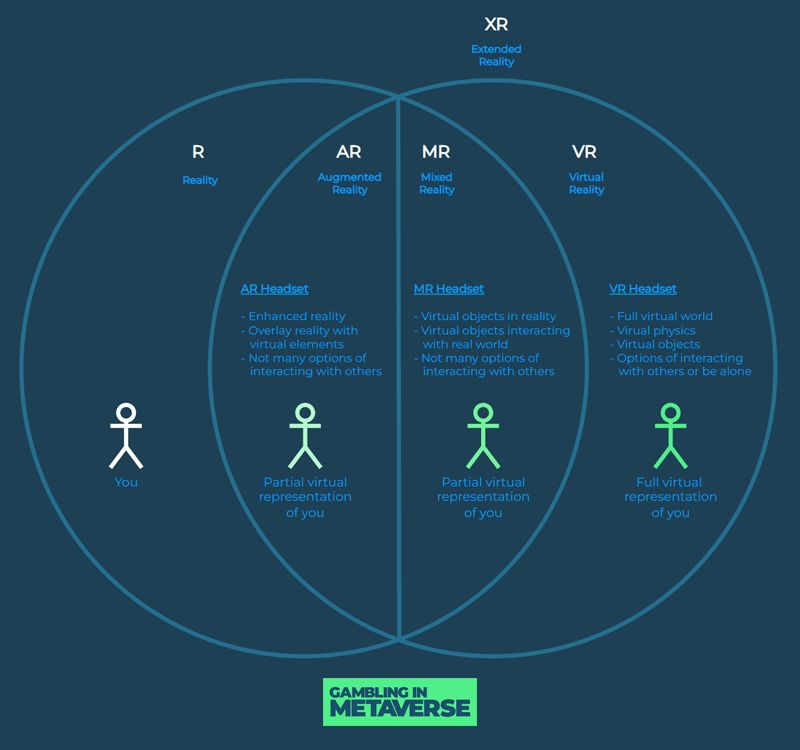AR (Augmented Reality), MR (Mixed Reality) and VR (Virtual Reality) are terms that have become increasingly popular lately in part due to the rise in awareness of the Metaverse concept. It is not always easy to distinguish the terms or the concepts behind them apart, I hope to shed some light on the situation with the different realities.
AR, MR and VR are sometimes collectively referred to as XR (Extended Reality) and refers to the addition to our regular reality in any way. Theoretically there can be additional variants added in the future.


Augmented Reality (AR) is the least intrusive way to overlay the real-world experience, and has been attempted many times with various levels of success. A prominent example is Google Glass that was touted by Google’s founder Sergey Brin. AR is an enhancement on the real-world around us, this is most commonly through visuals, aided by AR headsets/glasses, but can also include auditory or haptics. Think of AR as an helpful overlay to the real-world that can point out what you see in front of you or give you directions.
Mixed Reality (MR) is similar to AR but gets one step closer to the VR experience. You will experience the real world around you visually and audibly, but with the addition of a virtual experience that interacts with the real-world experience. As an example if you bounce a ball that is virtually introduced, it will bounce off the real world surface that you see, as such mixing two realities together. The most prominent example of a an MR Headset that achieves this is Microsoft’s HoloLens 2, which is targeted at professionals to assist them in carrying out various tasks.
Virtual Reality (VR) is the full immersion in a virtual world, which may look and function similar to the real-world, or be very different. The most common association is the VR Headset that takes over your full field of view, and presents this world as as you look around in the real world, you will see what is around you in the virtual world. There are different categories of hardware that enhance the experience and make you feel ever more immersed in virtual reality, sometimes referred to as the metaverse. Everything from VR headsets, VR controllers, VR bodysuits for haptic feedback and VR treadmills for walking around more naturally in the virtual world.
Extended Reality (XR) is the collective name given to AR, MR, VR and possibly future alternate versions of realities that will be introduced. The X in refers to Extended which simply means the real world that you experience around you is extended in some way to make it into a new experience. Sometimes the experience that you are in [AR, MR, VR] can be hard to define and can in certain situations be referred to as XR instead.
Augmented Reality (AR) and Mixed Reality (MR) can sometimes be confused as the hardware can often look very similar. The key difference is that AR is more like an overlay on the real world making the experience more rich, most often with helpful information. MR has the same capabilities, but takes it one step further with the introduction of virtual elements in the real-world experience. This is achieved with additional sensors on the MR Headset that scans the real world and creates an invisible virtual clone. This virtual clone is not visible to us, but is there for the 3D objects that are introduced to interact with or around. For the MR user, it will look just like the real world and the virtual world is co-existing.